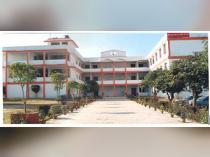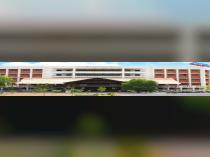What is JEE Main result date for Lokmanya Tilak Jankalyan Shikshan Sanstha's Priyadarshini Bhagwati College of Engineering?
-
1 Answer
-
Session Exam Type Result Date Session 2 (April) B.E./B.Tech (Paper 1) April 18, 2025 (after 2 PM) B.Arch / B.Planning (Paper 2) May 23, 2025 Session 1 (January) B.E./B.Tech (Paper 1) February 11, 2025 B.Arch / B.Planning (Paper 2) February 23, 2025 Next Steps
Visit the official JEE Main portal and download your NTA scorecard using your credentials.
Keep your April Paper 1 percentile/rank handy—it will be used during the Maharashtra CAP counselling for admission decisions, including slots at PBCoE.
Similar Questions for you
Who work on the rocket-propelled vehicles, they apply the principles of Mathematics, Physics, and Material Science to solve challenges related to these vehicles. Rocket Scientists are involved in the process of design and development of the vehicles such as small drones, satellites, and commercial aeroplanes.
Yes, this field is considered hard. It is complex and demands high precision. There can be extreme consequences for minor errors. The overall field is extremely challenging as it requires to apply the basic scientific principles to design and develop rockets. It requires sophisticated engineering with careful material selection, and allows narrow margin for error.
The following are the qualification which can help you to become a rocket scientist:
· Bachelor's Degree such as B.Tech/B.E can take up to four years to complete.
· You can do a two years Master's Degree M.Tech/M.E./M.S. after graduation.
· For advanced level study in this field, you can also do Ph.D and Research.
Well, becoming a rocket scientist is a long-term commitment, and it depends on your education path and goals It takes almost 5 to 6 years with a bachelor's and 8 to 12 years if you want to study higher. Here below is how long it usually takes:
- Bachelor's degree: You have to study aeronautical engineering, aerospace engineering, mechanical engineering or physics. This usually takes almost 4 years.
- Master's degree: this is almost optional, but it will help you specialise in rocket science, propulsion or space technology. This usually takes 2 years more.
- PhD: this is optional for a research job; if you want to do high-level research, then it
Hi.
- Check Validity: If your UDID card has a specified expiry date (this usually applies to temporary disabilities or cards issued to minors), you must apply for its renewal through the UDID portal before you submit your NTA application.
- Permanent Disability: Cards issued for permanent disabilities (
Taking an Exam? Selecting a College?
Get authentic answers from experts, students and alumni that you won't find anywhere else
Sign Up on ShikshaOn Shiksha, get access to
- 65k Colleges
- 1.2k Exams
- 679k Reviews
- 1800k Answers




